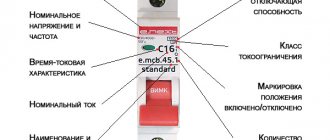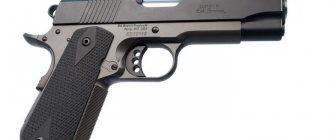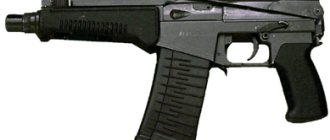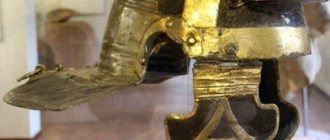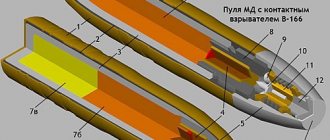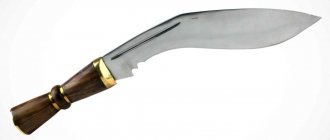APS: underwater assault rifle for combat swimmers
The invention of the underwater assault rifle became the starting point for further developments in the field of small arms for the aquatic environment
Like many works in Soviet weapons, the creation of specialized weapons for firing under water began under the influence of the “most likely enemy.” In the mid-60s, the American press wrote a lot about the “new generation weapon” - the Girojet rocket pistol. Among other options (and their company MB Associates produced many, hoping that at least some would “take off” and interest wealthy military customers) there was an underwater version of the Gyrojet Lancejet. Since this coincided with a similar “advertising” of the successful actions of American combat swimmers in Vietnam - both the newly created SEAL teams and the older UDT (Underwater Demolition Teams), the Soviet sailors decided to urgently address the issue of how to catch up and overtake their opponent. On instructions from the Navy, TsNIITOCHMASH began work in two directions at once: underwater weapons based on the jet principle (according to the American model) and cartridges of a more “classical” type, optimized for underwater shooting.
Girojet
It is interesting that initially the work on active-reactive weapons went faster, where consultations with the developers of the Shkval jet torpedoes had a positive effect, but then the group working on them ran into a problem that turned out to be insurmountable - due to the low temperature, the powder bomb accelerated more slowly, than required, as a result of which during tests “significant deviations of individual bullets from the direction of fire were recorded.” As a result, underwater weapon systems were created with cartridges with a long bullet, designed to fire both underwater and when leaving it. They tested both the SPS cartridge for an underwater pistol and the more powerful MPS cartridge - they wanted to make a machine gun for it for carriers of Triton combat swimmers. As a result, the MPS was “registered” on the APS underwater assault rifle, created on the basis of a conventional AKM, but redesigned for operation under water. However, it is quite correct to say that the designers from Tula and Klimovsk - V.V. Simonov, E.I. Simonova, P.I. Serdyukov - they made an underwater assault rifle almost from scratch. In particular, for shooting in two environments, an automatic gas regulator was created, which releases part of the powder gases when shooting outside the water. It is this unit that allows the APS automation to function equally reliably when firing both underwater and when exiting the water. In addition, the APS fires from the rear sear, which is more typical for machine guns than for machine guns/assault rifles.
Among the external features, the most recognizable part of the new machine gun was the magazine, designed for 26 long “needles” of a special underwater cartridge. The most recognizable part of the new machine gun was the magazine, designed for 26 long “needles” of a special underwater cartridge. The firing range of the machine gun depends on the depth and is approximately 23-25 m at a depth of 5 m and 10-12 m at a depth of 40 m. On land, the APS can be fired at a distance of up to 100 m, but in practice, combat swimmers preferred to take a separate “land” automatic machine for surface work. With its adoption, Soviet swimmers truly received a “unparalleled” type of weapon - no one else in the world was creating underwater assault rifles. The same Americans, quickly recognizing the futility of the Lancejet, adopted the Mk. 1 Underwater Defense Gun - an AAI designed revolver that fired tungsten darts approximately 200 mm long. It was later replaced by the West German P11. In the USSR, they not only continued work on the underwater machine gun, but also went further, starting the development of large-caliber underwater machine guns.
The photo and video shows an APS from the collection of the Tula State Weapons Museum .
Description[ | ]
OOB PDSS fighter with an APS assault rifle.
For the APS, a cartridge with a needle-type bullet was developed, this made it possible to solve two problems - stabilizing the bullet in water without imparting torque to it (since the barrel has no rifling) and preserving the energy of the bullet at a sufficiently large distance. The operating principle of the APS automation allows one to overcome the inert resistance of the fluid inside the mechanisms of this weapon. The range of effective fire exceeds the line of sight range in water. When shooting in the air at a distance of 30 m, all hits are placed in a circle with a diameter of 15 cm. The lethal effect of the bullet in the air is maintained at a distance of up to 100 m. At the maximum firing ranges under water, the lethal force of the bullet is enough to defeat an enemy in a wetsuit with a foam pad, as well as organic glass up to 5 mm thick.
The receiver is stamped from sheet steel. The trigger mechanism allows firing in both single and continuous bursts. The safety switch is located on the left side of the receiver above the pistol grip. The wire stock in the stowed position slides inside the receiver. The machine's service life is 2000 shots under water or 180 shots in the air. In addition to the standard MPS ammunition, the ammunition also includes the MPST tracer cartridge for shooting correction.
Due to the extremely low combat characteristics when firing in the air, as well as a significant reduction in the service life of the machine gun, combat swimmers, going on training missions, were forced to take with them two pistols and machine guns: both underwater APS and SPP-1, and conventional AK and PM. To solve this problem, the gunsmiths of the Tula KBP developed a double-medium ADS assault rifle [5].
Automatic machine for ichthyander
In Tula they created a weapon that can shoot both underwater and on land
Let's make a reservation - the first display of this machine gun took place at the International Naval Show in St. Petersburg just a couple of weeks ago. This material contains a small analysis of what the Tula people have created.
Weapons for combat swimmers began to be created as soon as underwater saboteurs appeared in the navies of the world, that is, during and after the Second World War. However, only the USSR was able to create full-fledged machine guns and pistols capable of shooting underwater.
Almost half a century ago, the 4.5 mm SPP-1 pistol and the 5.66 mm APS assault rifle appeared in the special reconnaissance units of the Navy. They shot arrows. They were effective under water, but not on land. It was, of course, possible to hit the enemy by coming to the surface. But only point blank. At a distance of 50 meters there was no aiming, and the lethal force dropped very significantly. The survivability of the underwater machine gun in the air did not exceed 180 shots.
No one in the world has been able to replicate our technology for creating automatic underwater weapons. However, when going on missions, combat swimmers were forced to take two pistols and machine guns with them: both underwater APS and SPP-1, and ordinary AK and PM. It was inconvenient. But creating a weapon that shoots equally well in two environments seemed impossible in principle.
Tula gunsmiths solved an unsolvable problem. The idea and general design were invented by the late outstanding small arms designer Vasily Petrovich Gryazev. The machine gun was embodied in metal by his associates and students who worked at the Central Design Research Bureau of Sports and Hunting Weapons, which is part of the Instrument Design Bureau, famous for its guided missiles and rapid-fire guns. (For those who don’t know: the KBP in Tula is not involved in instrument making; that’s what it was called in Soviet times to confuse spies. Weapons, including small arms, are created here.)
A unique underwater cartridge with the dimensions of standard automatic ammunition was also created at TsKIB SOO. In 2007, in Tula, the development of a 5.45-mm special dual-medium assault rifle (working in two environments) was completed, which received the abbreviation name ADS. It does not contain the name of a specific designer, since a large team worked on the new weapon. It might not sound nice. But how it shoots!
Underwater fire is carried out with 5.45x39mm cartridges. In the air - with classic cartridges of the same caliber 5.45x39 mm. You just need to change the magazine, equipped with cartridges for underwater shooting, to a new one, which contains ordinary cartridges for a standard Kalashnikov. The ADS also has an under-barrel grenade launcher for 40-mm VOG-25 and VOG-25P rounds. The kit may include a tactical suppressor and various sights.
The machine gun implements a lot of know-how that looks even unusual in domestic weapons. The bullpup circuit alone is worth it. This is when the pistol grip with the trigger mechanism is located in front of the magazine with cartridges, and the moving parts are located in the butt. This design makes it possible, while maintaining a large barrel length, to significantly reduce the dimensions of the machine gun. The ADS does not have the usual buttstock. It rests against the shoulder with a piece called the “butt plate.”
For the first time in domestic practice, they used ejection of spent cartridges not to the side, but forward with the box closed, which reduced gas pollution in the shooter’s face and made it possible to shoot from the right and left shoulder without reinstalling parts, that is, the machine is equally convenient for both right-handers and left-handers.
Composite materials are widely used in ADS, which reduce the weight of the weapon and at the same time increase corrosion resistance.
A gas regulator has been introduced into the design of the gas outlet device, providing easy switching of gas modes “water-air”.
For the first time in the world, it was possible to achieve that a machine gun shoots equally well under water and on land. At the same time, it is in no way inferior to AK-type assault rifles of the latest models, having smaller dimensions.
In the modern history of Russia, a truly revolutionary machine gun has been created, which has no analogues in the West or East of our country. ADS was created for combat swimmers. But since its design turned out to be successful and universal, it can be adopted not only by naval special forces, but also by all GRU special forces, marines and ground units.
The machine went through a full cycle of military tests and received positive reviews. It is now in trial operation. The decision to adopt it into service may be made in the near future.
TTX assault rifle ADS
Weight with grenade launcher - 4.6 kg;
Length - 685 mm;
5.45x39 mm cartridges: PSP-UD - for underwater shooting, 7N6 - for shooting in the air;
Rate of fire - 800 rounds/min;
Sighting range on land - 500 m.
Beginning of work
In 1955, the USSR was rocked by terrible news: as a result of a disaster that occurred on the territory of the Sevastopol Bay in Novorossiysk, a battleship sank. Soviet experts were convinced that this happened as a result of a successful sabotage carried out by the enemy. Despite the fact that the results of the investigation did not provide any basis for allegations of external interference, the tragedy forced the Soviet military to think about how to successfully defend against real underwater attacks by sabotage groups. Soon, special combat units were formed in the USSR, whose swimmers were armed with APS underwater assault rifles created by Soviet designers (photos of the weapon are presented in the article).
How does the weapon work?
The steel box of the machine is made of stamped steel sheet. Despite the fact that the APS is designed for shooting underwater, in appearance it is very similar to the land model. A special mechanism has been developed for underwater weapons that performs automatic reloading. Its operation uses the energy of powder gases removed from the barrel. The trigger mechanism allows the fighter to fire single shots and bursts. The firing mode is regulated with the help of a special translator. It is located on the receiver on the left side. The machine gun is equipped with a retractable metal wire stock, which easily slides out of the receiver. During a hike, the butt is pushed back into the receiver, and the machine gun itself is attached to the side of the underwater vehicle.
About the tactical and technical characteristics of the APS
The underwater assault rifle has the following characteristics:
- The weapon weighs 2.46 kg.
- Length - 84 cm (with the butt unfolded), 62 cm (without the butt).
- Ammunition: MPS and MPST 5.66 mm caliber.
- Rate of fire: 600 rounds per minute.
- The speed of a bullet fired underwater is 360 m/s, in air: 365 m/s.
- Underwater, the combat life of the machine gun is 2 thousand shots, on land - 180.
- The target range under water varies between 10-30 m, on the shore - no more than 100 meters.
In order to penetrate 0.5 cm thick organic glass and an enemy’s wetsuit, the destructive power of an APS underwater assault rifle is sufficient. Analogues of these Soviet weapons are in service with the Navy in other countries.
Underwater weapons for Chinese swimmers
On the basis of the Soviet APS, individual small arms were designed for combat scuba divers of the PRC. The model entered service in 2006 and is listed as QBS-6. The product is an underwater assault rifle designed to destroy underwater and surface enemy targets. Structurally, the QBS-6 has much in common with the Soviet rifle model.
The barrel of a Chinese underwater gun is locked using a rotating bolt. The receiver is made of stamped sheet steel. The Chinese one differs from the Soviet APS in the presence of a plastic forend. In an effort to ensure the most convenient use of the machine gun, Chinese designers equipped it with fairly wide trigger guards. The barrel of the weapon does not contain rifling. The machine is equipped with shoulder wire stops. The magazine capacity is 25 rounds. The caliber of cartridges used is 5.8 mm. The underwater assault rifle is equipped with non-adjustable fixed sights.
